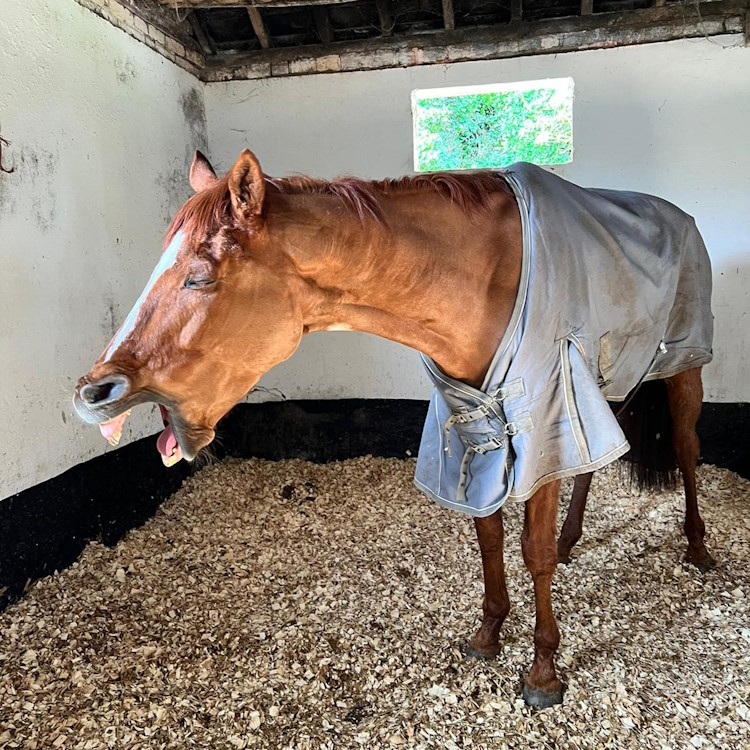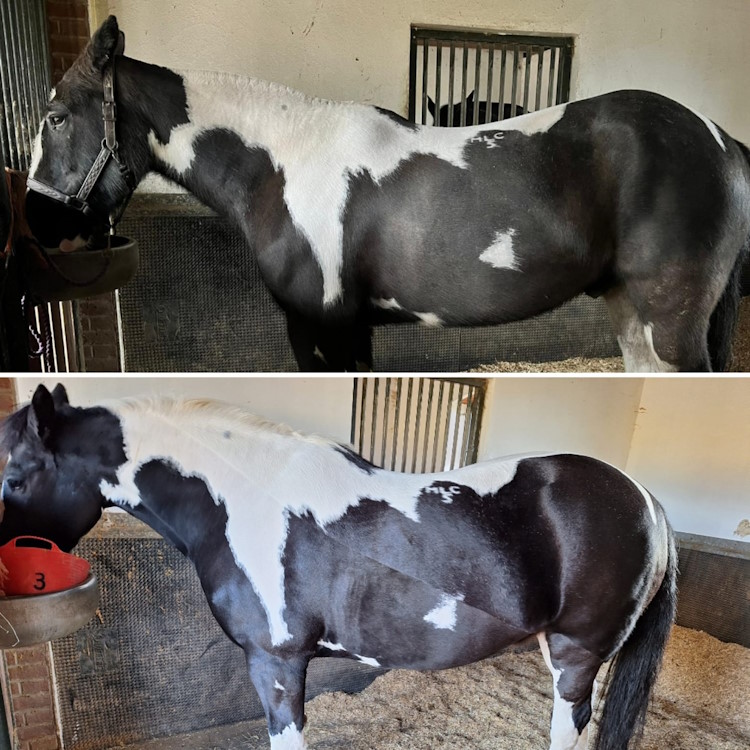McTimoney aims to aid pain and dysfunction of the musculoskeletal system by use of high velocity, low amplitude adjustments. A misalignment is a restriction in an area that limits the normal range of motion. By removing these misalignments, the body is able to return to normal function once again, Improving movement and comfort.

Misalignments can be either chronic or acute and caused by a number of factors such as falls, injuries or conformation or lifestyle issues such as rider, tack or discipline. The treatment works on identifying the cause, not just by treating the symptoms.
Common symptoms include:
- Decreased performance
- Change in behaviour
- Difficulty in bending one way
- Reluctance to go forward, track up or engage the hindquarters
- Change in gait or loss of impulsion
- Unlevelness behind
- Difficulty with certain movements under saddle or in hand
- Difference in strength between reins
- Asymmetrical muscle development or loss of muscle tone
- Holding the tail over to one side
- Knocking down poles or reluctance to jump
- Resistances such as rearing, bucking, napping, bolting
- Change in temperament
- Inability to stand square
- Discomfort when groomed or girthed
- Unable to work ‘on the bit’
- Asymmetry: Disunited in canter, difficulty getting correct canter lead, stiffness on one rein, reluctance to bend, tilting the head
- Inability to perform lateral work
- Uneven shoe wear
- Lameness such as after a fall or accident, where alternative causes have been eliminated by a vet
- Shifting of weight when standing
- Saddle slip
Without addressing these issues, it could lead to compensations within the horse such as uneven muscle development or changes in movement.
It is important to note that I am not a vet. Any undiagnosed lameness issues or extreme cases of discomfort must be seen by a vet prior to treatment. Under the Veterinary Surgeons Act 1966 permission must be saught from your animal’s veterinary surgeon before any treatment can commence.
Every treatment will be individual to your horse. However, the layout of my visit will usually be as follows:
Case History
I will discuss prior injuries or ailments of the horse as well as its usual exercise and daily routine.
Assessment
This is where I will assess the horse’s posture and conformation for any likely areas of misalignment. I will then watch the animal move in both walk and trot, turn in tight circles and back up. This will allow me to assess gait abnormalities, asymmetries and stiffness, whilst also asking the owner if this is normal for the individual animals. If a problem is occurring on the lunge or under saddle I may also ask to see the horse ridden/lunged.
Explanation
I will then explain what I am about to do, and what you can expect during and after treatment and what to look out for between treatments.
Palpation
I will then use my hands to feel for areas of muscle tension or misalignments within the body so that I can assess where we are likely going to find areas that require treatment.
Treatment
McTimoney treatment uses high velocity, low amplitude movements to areas of misalignment using just my hands. These quick movements will reduce muscle spasm, allowing the joints to return to their normal range of motion. By use of soft tissue therapy alongside, I am able to reach optimum muscle relaxation.
I utilise a mixture of soft tissue techniques to provide the most thorough treatment that I can, which I find makes the biggest difference to your horse. I am a firm believer in not finishing a treatment until I am happy and therefore the duration of my treatments is relative to what I find on the day. My two degrees complement each other entirely and I do not believe that one works without the other, hence why I implement both into every horse.
Aftercare
This treatment continues to work upon the musculoskeletal system for to to 72 hours after I have visited. Every horse reacts differently to the treatment; some may feel revitalised and feel like a new horse, but others may feel stiff or tired whilst the session impacts them and allows the body to return to its optimum state. Due to this, a gradual return to their normal workload will be advised and treatment should be planned around shows, lessons, or important dates.
I will also provide relevant advice regarding tack fit, shoeing and veterinary visits in order to maximise the effects of treatment. However, it must be remembered that I am not a vet. Regular treatments are recommended as a preventative measure – these will be discussed according to individual need.
Please contact me if you would like to discuss your animal in more detail.
